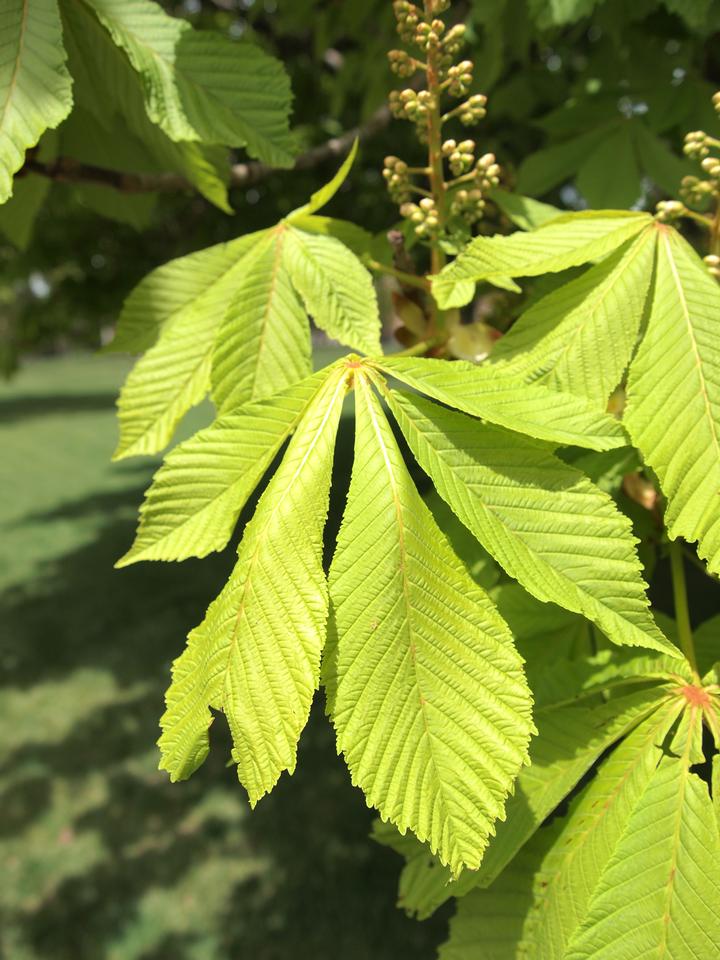Horsechestnut
Aesculus hippocastanum
Hippocastanaceae - Buckeye
Description
Leaves: Opposite; palmately compound; deciduous; usually 7 leaflets (occasionally 5), obovate, 5" to 7" long, margins doubly serrate; rusty hairs beneath when young; fall color yellow-brown.
Twigs/buds: Twigs stout; glabrous; red-brown. Terminal buds over 1" long, brown, covered with waxy gum, shiny.
Flowers/fruit: Polygamo-monoecious. Very showy white to light yellow flowers with red spots, held in large cone-shaped clusters in May. The fruit is a round capsule; thick; leathery; prickly; yellow-brown; 1" to 2" in diameter; containing 1 to 3 smooth, shiny, brown kernels.
Bark: Dark gray to brown; platy and peeling on older stems with orange-brown inner-bark.
Wood: Moderately important where native. Creamy-white; diffuse-porous; used for containers, furniture, etc.
General: Native of Asia. Prefers moist, protected sites; generally will leaf scorch on hot, dry sites. Very pH adaptable. Shade tolerant. Fruit and/or plant part can be nuisances; use fruitless varieties if possible.
Landscape Use: A popular shade tree around the world that was planted a lot in some parts of Utah many years ago. Flowers are beautiful and the fruit is interesting, but can be a real nuisance. Canopy shape is wide and spreading and the shade is very intense. It might be interesting to grow this tree in a shady spot. Zones 3-7.
Cultivar: 'Baumanii'.
Characteristics
General
| Family | Hippocastanaceae - Buckeye |
|---|---|
| Cultivar Availability | Yes |
| Hardiness Zone | 3-7 |
| Type | Broadleaf |
| Utah Native | No |
Growth
| Growth Rate | Medium |
|---|---|
| Mature Height | High |
| Longevity | High |
| Is Good Under Power Lines | No |
| Crown Shapes | Rounded |
Ornamental
| Bark | No |
|---|---|
| Fall Color | No |
| Flowers | Yes |
| Foliage | No |
| Fruit | No |
Tolerance
| Shade | Medium |
|---|---|
| Salt | High |
| Drought | Medium |
| Poor Drainage | Medium |
| Alkalinity | Medium |
| Transplanting | Medium |







